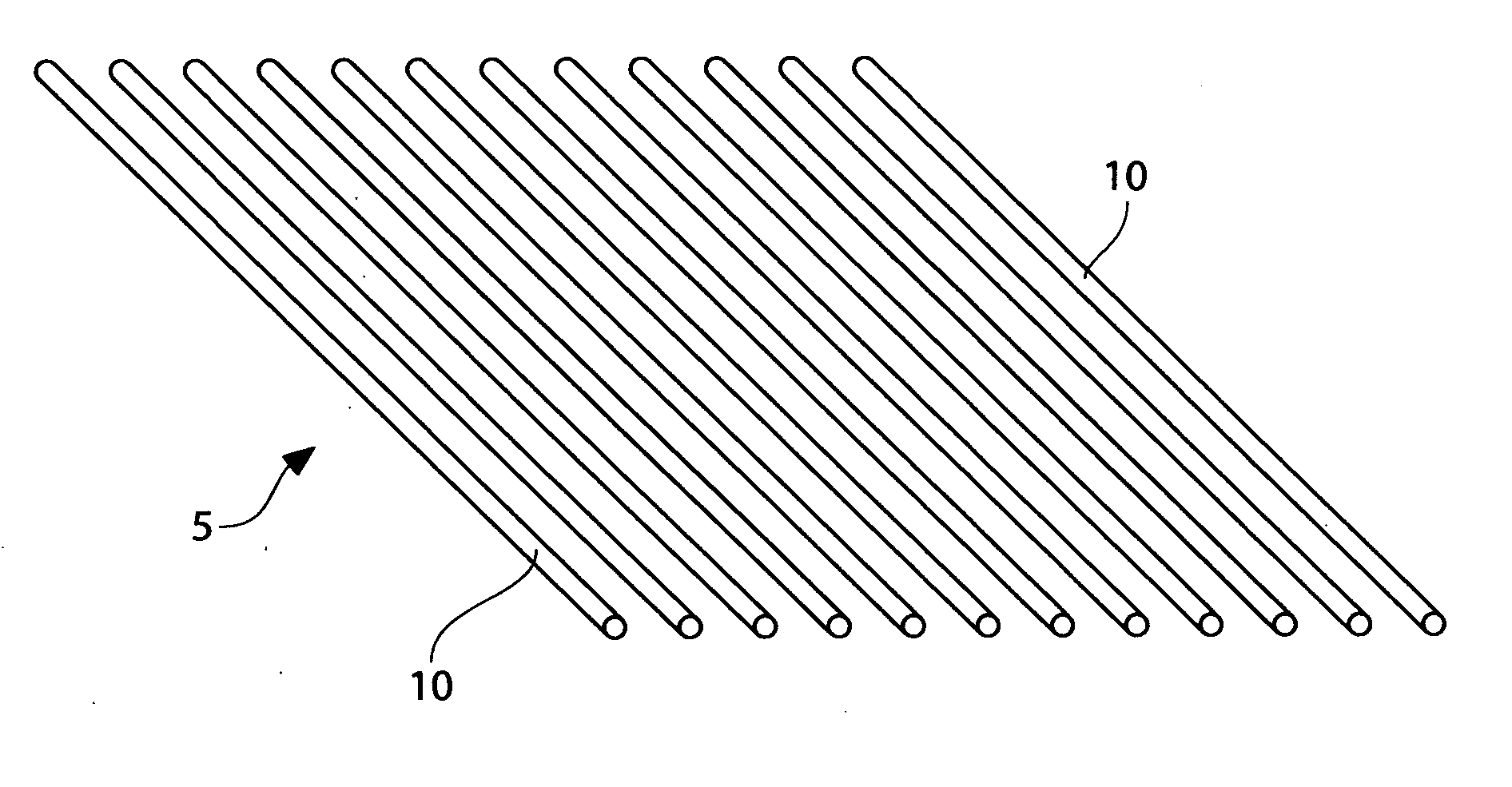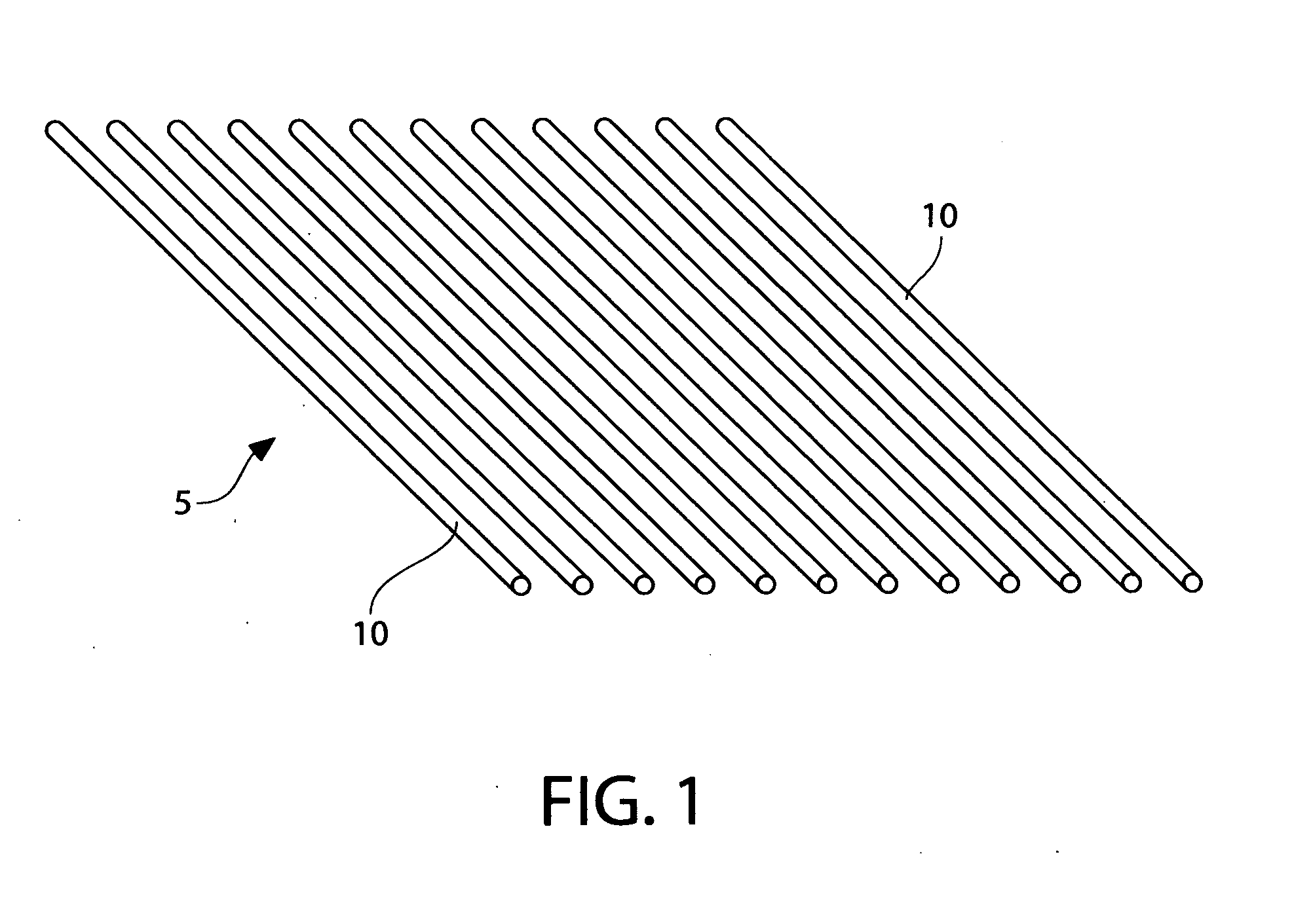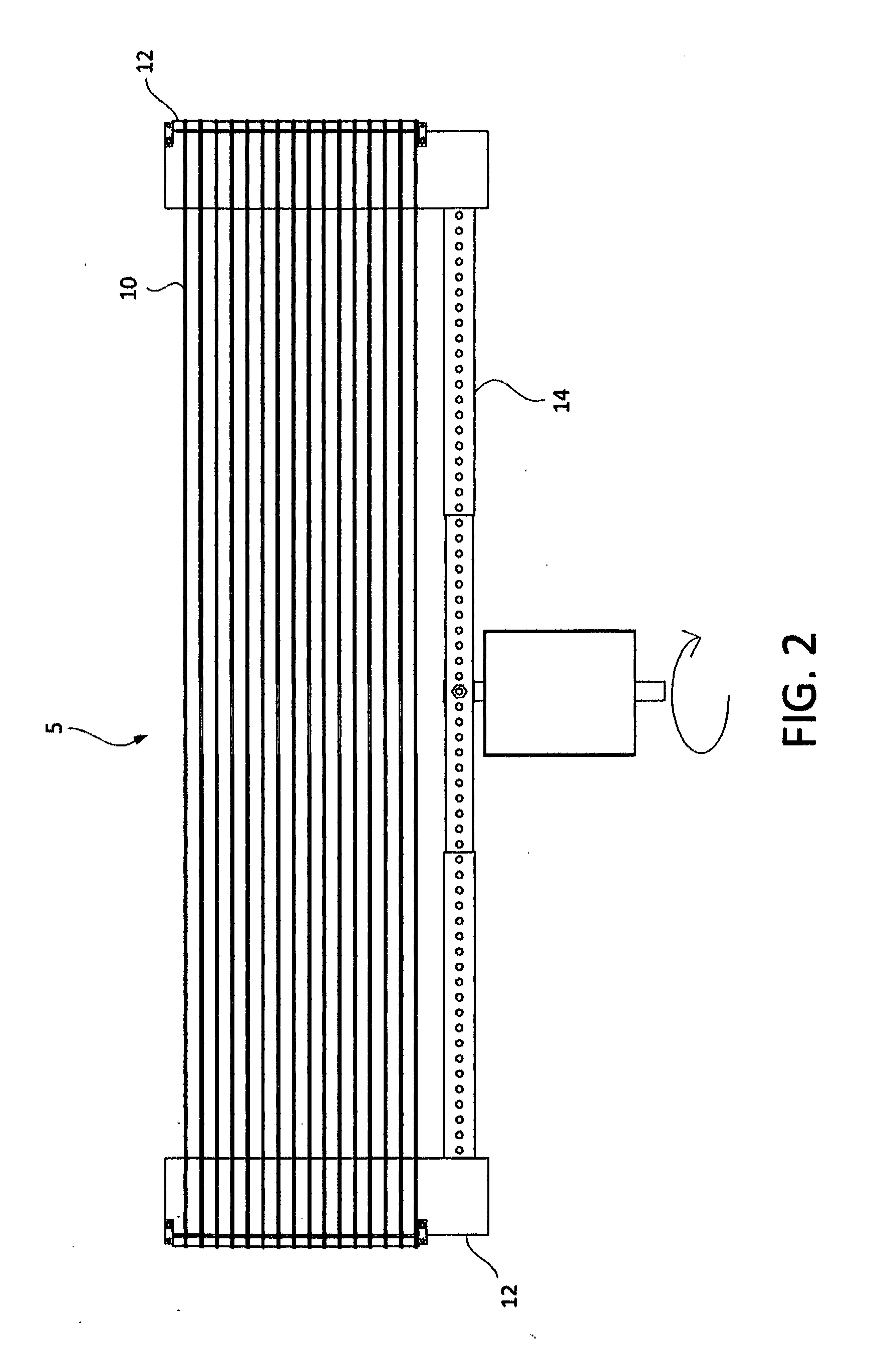Fluoropolymer hollow fiber membrane with fluoro-copolymer and fluoro-terpolymer bonded end portion(s) and method to fabricate
a technology of hollow fiber membrane and fluoropolymer, which is applied in the direction of domestic applications, water/sewage treatment, osmosis/dialysis, etc., can solve the problems of fiber pullout failure, epoxies, cyanoacrylates, polyurethanes, etc., and achieve the effect of promoting enhanced adhesion
- Summary
- Abstract
- Description
- Claims
- Application Information
AI Technical Summary
Benefits of technology
Problems solved by technology
Method used
Image
Examples
example 1
[0096]In this example, the film potting method is used to make a cross flow module consisting of 110 hollow fibers potted at both ends of the bundle.
[0097]110 loops of a hollow fiber membrane prepared from polytetrafluoroethylene with an inner diameter of 1.5 mm and an outer diameter of 1.9 mm with a porosity of 40% were wrapped around a winding frame 400 mm from end to end and 250 mm wide. The winding frame was fitted with slotted rods at each end, with spacing between slots of 2.0 mm, ensuring spacing between the hollow fibers of 0.1 mm.
[0098]A potting film pre pared from Ethylene Fluorinated Ethylene Propylene copolymer (EFEP, Daikin RP 4020) with a thickness of 0.0762 mm, a width of 25.4 mm, and a length of 220 millimeters was woven between each individual fiber at the end of the winding frame. The film was passed underneath the first fiber on the frame and then alternately passed over the top of the next fiber and underneath the following fiber. This pattern was repeated until ...
example 2
[0105]In this example, the film potting method is used to produce a dead-end filter module. A continuous length of porous PTFE hollow fiber with the dimensions of 1.0 mm inner diameter and 1.5 mm outer diameter, with a specific gravity of 0.9 grams / cm3 was employed for this module. Using the winding apparatus previously described in Example 1, the fiber was wound between the two end pieces 120 times to create two 120-fiber webs on the top and bottom of the winding frame. The spacing between the fibers was maintained by machined grooves in the end pieces of the winding frame. The spacing between the fibers was set at 1.6 mm. The spacing between the two end elements of the frame was 610 mm. This process was repeated several times to generate sufficient fibers to make the unit.
[0106]A strip of 0.051 mm thick THV-220G film (Dyneon) with a width of 50 mm was woven in between the porous hollow fibers following previously described methodology at the two ends of the winding frame. After we...
example 3
[0113]In this example, the film potting method is used to produce a double ended cross flow module using double weaves. 200 loops of a hollow fiber membrane prepared from polytetrafluoroethylene with an inner diameter of 1.5 mm and an outer diameter of 1.9 mm with a porosity of 65% were wrapped around a winding frame 1000 mm from end to end and 400 mm wide, fitted with slotted rods at each end, with spacing between slots of 2.0 mm, ensuring spacing between the hollow fibers of 0.1 mm.
[0114]A potting tape prepared from Dyneon THV-220 with a thickness of 0.0762 mm, a width of 25.4 mm, and a length of 600 millimeters (referred to as the weave tape) was woven between each individual fiber at the end of the winding frame starting by passing under the first fiber, over the adjacent fiber, and continuing across the frame, resulting in a strip of potting film being interlaced between the fibers. The excess tape was trimmed off.
[0115]After completing the initial weaving step, a second piece ...
PUM
| Property | Measurement | Unit |
|---|---|---|
| melting point | aaaaa | aaaaa |
| pressures | aaaaa | aaaaa |
| temperatures | aaaaa | aaaaa |
Abstract
Description
Claims
Application Information
 Login to View More
Login to View More - R&D
- Intellectual Property
- Life Sciences
- Materials
- Tech Scout
- Unparalleled Data Quality
- Higher Quality Content
- 60% Fewer Hallucinations
Browse by: Latest US Patents, China's latest patents, Technical Efficacy Thesaurus, Application Domain, Technology Topic, Popular Technical Reports.
© 2025 PatSnap. All rights reserved.Legal|Privacy policy|Modern Slavery Act Transparency Statement|Sitemap|About US| Contact US: help@patsnap.com



